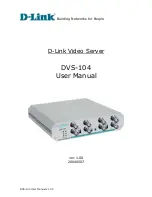
Terminology
236
to direct console server traffic to it. It is a 48-bit number written as a series
of 6 hexadecimal octets,
e.g.
00:d0:cf:00:5b:da. Each console server has its
MAC address printed on a label underneath the device.
MSCHAP
Microsoft Challenge Handshake Authentication Protocol (MSCHAP) is
authentication for PPP connections between a computer using a Microsoft
Windows operating system and a network access server. It is more secure
than PAP or CHAP and also supports data encryption.
NAT
Network Address Translation. The translation of an IP address used on one
network to an IP address on another network. Masquerading is one
particular form of NAT.
Net mask
The way that computers know which part of a TCP/IP address refers to the
network and which part refers to the host range.
NFS
Network File System is a protocol that allows file sharing across a network.
Users can view, store, and update files on a remote computer.
NTP
Network Time Protocol (NTP) used to synchronize clock times in a network
of computers
Out-of-Band
Management
Out-of-Band (OOB) management is any management done over channels
and interfaces that are separate from those used for user/customer data.
Examples would include a serial console interface or a network interface
connected to a dedicated management network that is not used to carry
customer traffic, or to a BMC/service processor. Any management done over
the same channels and interfaces used for user/customer data is In Band.
PAP
Password Authentication Protocol (PAP) is the usual method of user
authentication used on the internet: sending a username and password to a
server where they are compared with a table of authorized users. Whilst
most common, PAP is the least secure of the authentication options.
PPP
Point-to-Point Protocol. A networking protocol for establishing links between
two peers.
RADIUS
The Remote Authentication Dial-In User Service (RADIUS) protocol was
developed by Livingston Enterprises as an access server authentication and
accounting protocol. The RADIUS server can support a variety of methods to
authenticate a user. When it is provided with the username and original
password given by the user, it can support PPP, PAP or CHAP, UNIX login,
and other authentication mechanisms.
Router
A network device that moves packets of data. A router differs from hubs and
switches because it is intelligent and can route packets to their final
destination.
SIM
Subscriber Identity Module (SIM) card stores unique serial numbers and
security authentication used to identify a subscriber on mobile telephony
devices
SMASH
Systems Management Architecture for Server Hardware is a standards-
based protocols aimed at increasing productivity of the management of a











































